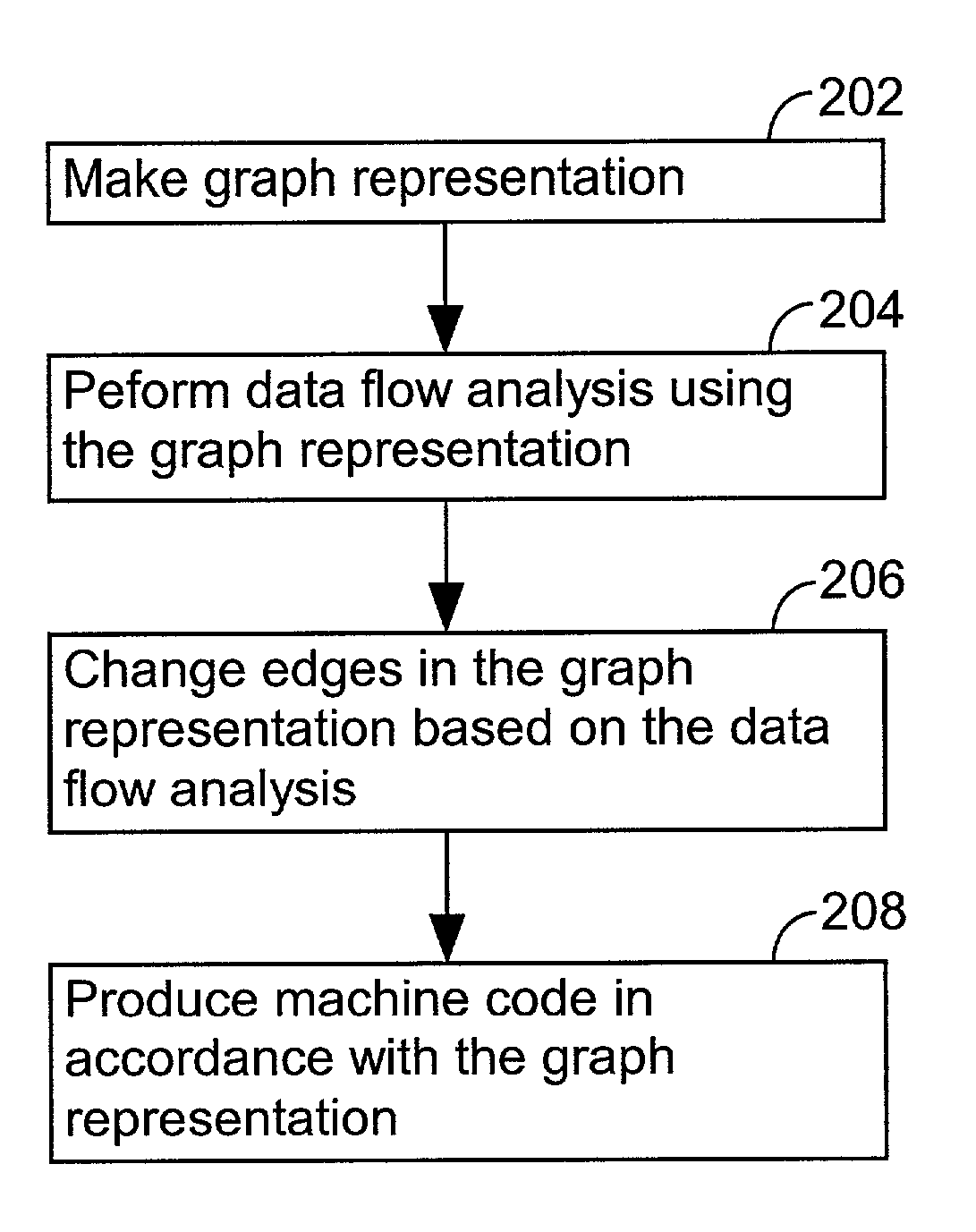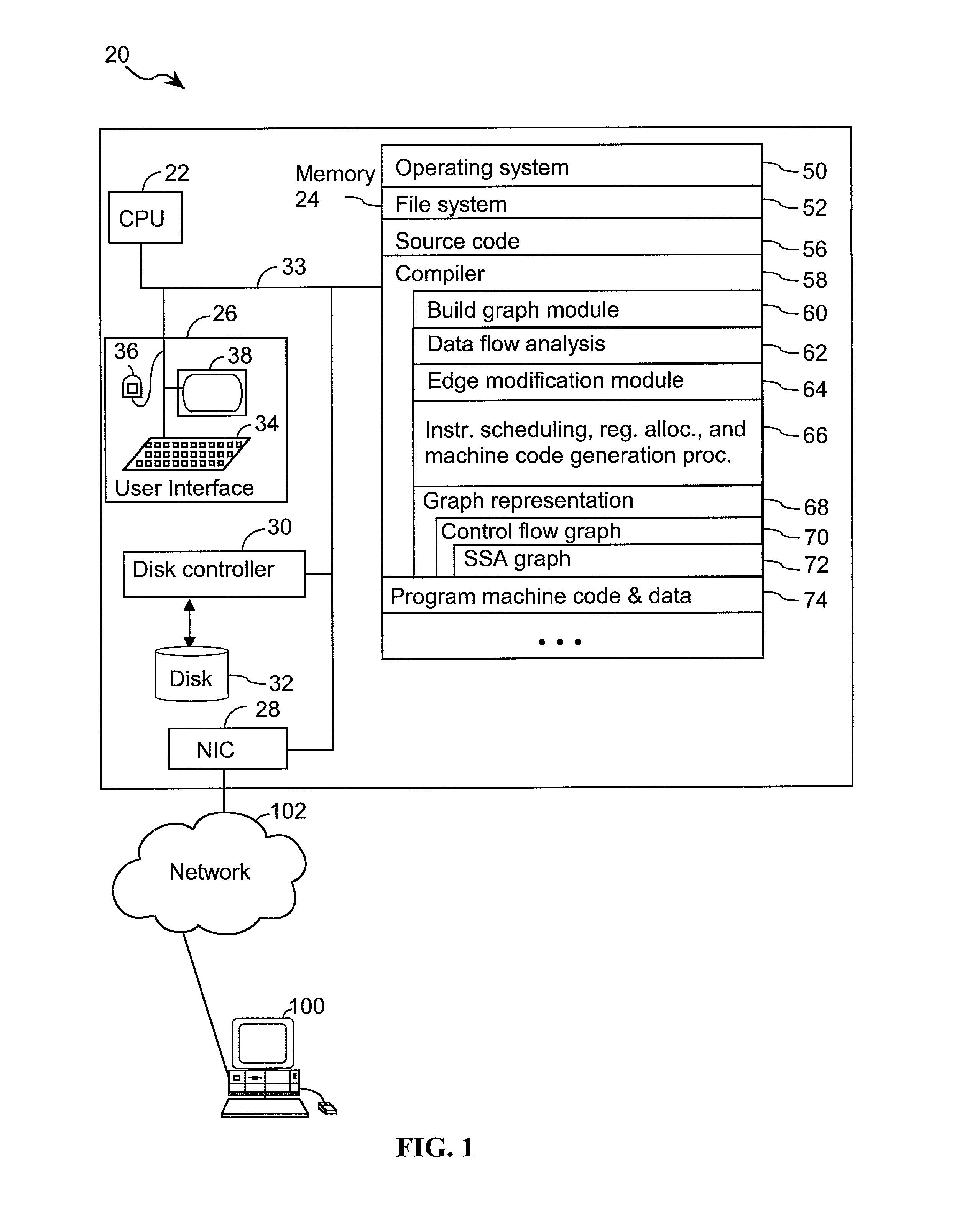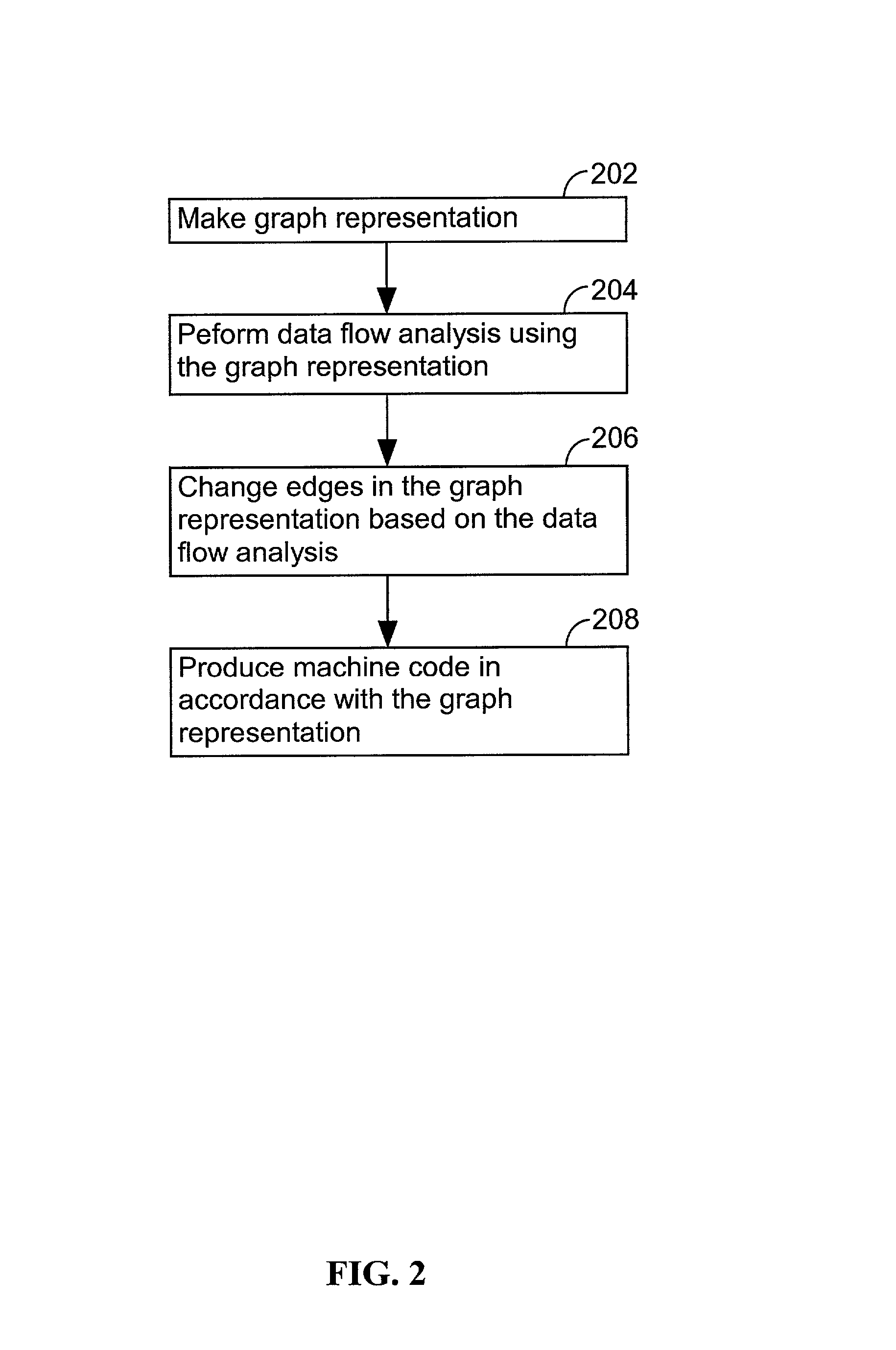System and method for optimizing operations via dataflow analysis
a dataflow analysis and optimization method technology, applied in the field of machine code generation, to achieve the effect of optimizing the speed of machine code generated by compilers, reducing the cost of production, and increasing the flexibility of scheduling memory operations
- Summary
- Abstract
- Description
- Claims
- Application Information
AI Technical Summary
Benefits of technology
Problems solved by technology
Method used
Image
Examples
Embodiment Construction
[0029]A memory operation is a load or store from the general memory in a program. Memory operations are typically required when accessing a global variable, the field of a structure, an object, or an element of an array. Accessing local variables of a procedure may sometimes involve memory operations, but often the compiler keeps local variables in registers.
[0030]The present invention is useful for analyzing the dependencies between various memory operations, such as loads and stores. The information derived from such an analysis is useful for optimizing the generated machine code that corresponds to these memory operations because, in many instances, it allows for a relaxation in the rules for scheduling such memory operations. Strongly-typed languages, such as Java™, provide a rich source of memory operation location types. For instance, when the procedure to be compiled is written in Java™, the data type of each operation can serve as a location type. The designation of memory o...
PUM
 Login to View More
Login to View More Abstract
Description
Claims
Application Information
 Login to View More
Login to View More - R&D
- Intellectual Property
- Life Sciences
- Materials
- Tech Scout
- Unparalleled Data Quality
- Higher Quality Content
- 60% Fewer Hallucinations
Browse by: Latest US Patents, China's latest patents, Technical Efficacy Thesaurus, Application Domain, Technology Topic, Popular Technical Reports.
© 2025 PatSnap. All rights reserved.Legal|Privacy policy|Modern Slavery Act Transparency Statement|Sitemap|About US| Contact US: help@patsnap.com



